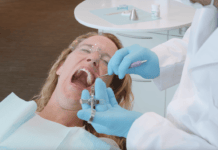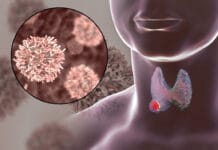The Centers for Disease Control and Prevention (CDC) estimates that 46% of children ages two to 19 have untreated or restored dental caries in one or more primary or permanent teeth in the United States.1
The University of Michigan Health C.S. Mott Children’s Hospital National Poll on Children’s Health found that over one-third of parents report that their child has experienced dental issues related to oral hygiene, such as tooth discoloring or staining, gingival problems, tooth sensitivity or pain, or dental caries in the past two years.2
The Poll
The survey was administered in August 2024 to a randomly selected group of adults who were parents of at least one child living in their household aged one to 17. A total of 2,010 people were polled. The poll completion rate was 67%, leading to the total number of participants being 1,801 with at least one child aged four to 17.2
The poll inquired about oral hygiene practices, including twice-a-day brushing for at least two minutes, tongue cleaning, interdental cleaning, using mouthwash or a fluoride rinse, or rinsing with water after eating sugary foods. Additionally, there were questions about halitosis and recent dental visits.2
Oral hygiene habits were put into categories and measured on the number of tasks completed on all or most days.2
The Results
The results showed that more than half of parents reported their children brushing twice daily and brushing for at least two minutes on all or most days. About one-third reported that their children clean their tongues all or most days. Less than one-fourth of parents polled reported their child cleans interdentally, uses mouthwash or fluoride rinse, or rinses with water after consuming sugary foods all or most days.2
The percentages of each oral hygiene practice children were reported to complete on all or most days included:2
- Brushes twice a day: 64%
- Brushes for at least two minutes: 59%
- Cleans their tongue: 35%
- Cleans interdentally: 23%
- Uses mouthwash or fluoride rinse: 22%
- Rinses with water after consuming sugary foods: 15%
Only 20% of parents report that their children complete four to six oral hygiene practices all or most days, compared to 41% completing two to three and 38% completing zero to one. Parents reported fewer boys regularly brush and clean interdentally than girls.2
Parents who reported their children had halitosis also reported that their children only completed zero or one oral hygiene practice on all or most days. Parents attributed their child’s bad breath to the following:2
- Morning breath (77%)
- Lack of brushing/cleaning interdentally (47%)
- Eating smelly foods (23%)
- Mouth breathing (19%)
- Dental problems (8%)
- Illness (6%)
- Side effects of medications (4%)
Most parents addressed their child’s halitosis by having them brush more frequently, use mouthwash, clean interdentally more regularly, go to the dentist/doctor, chew gum/eat breath mints, or change their diet.2
Most parents (89%) reported their child’s most recent dental visit was within the last year. While only 7% reported it had been one to two years, and 4% reported it had been more than two years since their child’s last dental visit.2
Implications
Over one-third of the parents in this survey disclosed that their children do not regularly achieve the basic level of oral hygiene, brushing twice daily for at least two minutes. Learning proper oral hygiene practices in childhood is essential for lifelong habits.2
In some families, oral hygiene practices are not routine. This could be due to the times of day when oral hygiene takes place. In most cases, oral hygiene practices are completed in the morning or before bed. Both times of day can be hectic, leading to frustration and a lack of implementing good habits. Therefore, it is recommended that parents “build in” time to practice oral hygiene and create attainable routines.2
Parents can encourage oral hygiene practices and establish routines using reward charts to reinforce consistency and modeling behaviors that promote good oral hygiene practices. Parents can also choose products that make oral hygiene easier, such as floss aids, and allow children to choose a toothbrush in their favorite color.2
Regular dental visits are essential for children as well. A child’s first dental visit should occur when the first tooth erupts and no later than age one.3 Regular dental visits will allow for early detection of any dental issues. Untreated dental caries and periodontal disease can make it difficult for children to speak clearly and eat. Difficulty eating may lead to inadequate nutrition. Other dental issues, such as discolored teeth and halitosis, can be embarrassing for children and lead to low self-esteem.2 Additionally, the dentist and dental hygienist often encourage children to improve their oral hygiene practices. Encouragement and guidance from someone other than a parent may help to contribute to improved oral hygiene practices.
Finally, fluoride helps remineralize enamel and reduces the risk of dental caries. This is especially important during childhood when teeth are developing. Fluoride is found naturally in water. However, in some cases, the fluoride levels are too low to provide oral health benefits. Discussing fluoride exposure with parents can help ensure children are exposed to enough, but not too much, fluoride.2
Developing consistent oral hygiene practices during childhood establishes a foundation for good oral hygiene practices as an adult, improving oral health and quality of life.2
Before you leave, check out the Today’s RDH self-study CE courses. All courses are peer-reviewed and non-sponsored to focus solely on high-quality education. Click here now.
Listen to the Today’s RDH Dental Hygiene Podcast Below:
References
- Oral and Dental Health. (2024, September 24). Centers for Disease Control and Prevention. https://www.cdc.gov/nchs/fastats/dental.htm
- Clark, S.J., Schultz, S.L., Gebremariam, A., et al. Oral Hygiene Is Key to Healthy Smiles. C.S. Mott Children’s Hospital National Poll on Children’s Health, University of Michigan. 2025; 46(5). https://mottpoll.org/reports/oral-hygiene-key-healthy-smiles
- Periodicity of Examination, Preventive Dental Services, Anticipatory Guidance/Counseling, and Oral Treatment for Infants, Children, and Adolescents. (2022). American Academy of Pediatric Dentistry. https://www.aapd.org/globalassets/media/policies_guidelines/bp_periodicity.pdf











